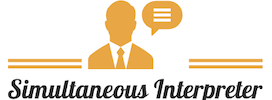Most graphic designers will admit that 30% of their work revolves around modifying another designer’s blunders. The same rings true for human translators when it comes to dealing with automated translations. Almost a third of a translator’s time is spent fixing the errors machine translation tools make.
While machine translation promises fast and free translation, the results rarely meet company standards for accuracy and consistency.

What Is Machine Translation?
In short? Machine Translation (MT) is any translation carried out by a computer using an artificial neural network. It’s a straightforward form of translation that allows a user to choose the base and target languages. But MT performs word-for-word replacements of a source-language text with a target language equivalent. The art of translation goes far beyond just this primary function.
Here’s the problem with MT: It doesn’t understand nuances and the cultural aspect of languages.
One example of MT failing horribly is an article about former First Lady of the U.S.A, Laura Bush, translated by a computer from English to French. While the computer is programmed to discern specific figures of speech and expressions, it cannot alter the content and adapt it to the target audience. Every mention of the word “Laura Bush” in the article was translated to “le buisson de Laura”. The surname “Bush” was transliterated as a noun instead of a surname. In French, the word “buisson” is slang for “vagina”. Need we say more about the problem?
Computers lack self-awareness and insight, something only humans have. And when comparing machines with human translations, self-awareness is the most significant difference between the two. Professional translators are linguists, expert craftsmen, specialists, and all-in-one wordsmiths that deliver results computers simply cannot compete with.
So Why Do People Use Machine Translation?
Even though it has its shortcomings, there are still many companies that turn to MT. Some of the reasons for this include:
Speed – When it comes to speed, humans can’t keep up with the pace of computers. Companies often resort to MT when there’s a lot of content that has to be translated in a short amount of time. But MT’s speed advantage has a severe pitfall: loss of accuracy.
Consistency – MT is very consistent as far as wording and style are concerned. Still, since machines can’t replace words with more acceptable phrases based on cultural nuances, they cannot judge the meaning of content based on the context.
Cost – MT delivers quick turnaround and is customizable, which can help companies save in translation costs. Machine translations do not charge for reworking content, so it is much cheaper than human translation services.
MT can be helpful if…
- You only need to translate a section of content for your business.
- You’re exploring the idea of an expansion or testing a market and aren’t entirely ready for the full-on human translation project.
- Your content isn’t creative in nature and is more basic, covering aspects like guidelines or directions.
Why Human Translation Reigns Supreme
Machines cannot deliver the kind of accuracy and excellence that professional, human translators are known for. The systematic process used by human translators and the application of focused expertise makes them the obvious choice when quality and accuracy are the focus points of a translation.
Why human translations trump MT
Quality – Professional translations sound natural and fluent because human translators focus on an artistic interpretation of the original content. They rewrite and rearrange words and phrases to ensure it appeals to and suits the target audience. But most importantly: they retain the essence of the content because they understand native vernaculars, tone, and idiomatic phrases, which a machine cannot do.
Cultural Sensitivities – Cultural sensitivities play a significant role in successfully translating content. Every culture has its unique values woven into its native language, so being sensitive to these norms and values is crucial when translating content from one language to another.
Human Translations Are Recommended For…
- Projects that prioritize accuracy over speed.
- Capturing the essence of the message is non-negotiable.
- Quality content (which includes localization and context) is your number one priority.
Choosing The Best Translation Method
Simultaneous interpreter is passionate about helping businesses connect with customers around the globe. By using machine translation software and combining it with professional human translators’ expertise, we can help you decide on the best solution for your translation needs. We’re here to help you move the world with your words!




















